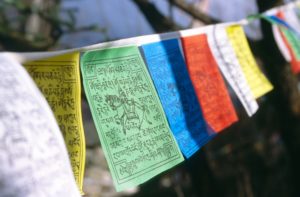 For individuals interested in gaining a deeper understanding of Reiki or those curious about the differences between its various forms, I’ve chosen to share my personal experiences with the forms I practice and instruct, dedicating a separate blog post to each form. Here I cover Tibetan Usui Reiki, also called Usui Tibetan Reiki.
For individuals interested in gaining a deeper understanding of Reiki or those curious about the differences between its various forms, I’ve chosen to share my personal experiences with the forms I practice and instruct, dedicating a separate blog post to each form. Here I cover Tibetan Usui Reiki, also called Usui Tibetan Reiki.
For this blog post, I write from the practitioner’s point of view, not the client’s. These two experiences can vary because everyone perceives energy a bit differently. Therefore, take this information as a personal account and not an objective or more universal description.
The Origin of the Tibetan Form of Usui
This form of Reiki was developed by Arthur Robertson. Robertson was a student of Iris Ishiruko. Iris studied under Mrs. Takata, a renowned practitioner who had introduced the ancient healing practice of Reiki from Japan to the United States.
Under Mrs. Takata’s mentorship, Iris delved into the intricacies of Reiki, learning the various hand positions, symbols, and techniques that formed the foundation of the practice.
Robertson also taught his variation of the energy healing modality, Tibetan shamanism. As is common with many energy practitioners, he cross-fertilized two healing systems and created a slightly modified Usui system. It has several distinct advanced techniques and two additional symbols that aren’t derived from Japanese Kanji (characters) like the rest of the Usui symbols are. The Tibetan Masters certified in Robertson’s modality learn how to perform a healing attunement and aura clearing: both powerful healing techniques.
The most common forms of Reiki in the USA are Western Usui and Usui/Tibetan Reiki (also other blog posts on one of the Usui variations: Western and Eastern or Traditional Usui).
People tend to start with Western or Tibetan Usui and branch out from there. Sometimes they move on to Sekhem-Seichim Reiki (SSR) after the Level I Usui class, but more often people come to SSR after Level II or Level III/Master Usui.
To study Karuna®, you must first be attuned to Level III/Master Usui: either Western or Tibetan. Among Western practitioners, the same is usually true for Eastern or Traditional Usui and Gendai. This is probably the main reason why people start with either Western or Tibetan Usui.
The Feel of Tibetan Reiki
The quality of energy no matter the Usui variation is essentially the same. It’s very light like air. It’s like a soft breeze moving through my hands. Sometimes it’s a bit cool, sometimes it’s a bit warm. But, always the sensation in my hands is a subtle light breeze or movement. I feel that Tibetan version makes me warmer than the Western or Eastern version.
But, just because Usui is soft and gentile, doesn’t mean it isn’t powerful and effective. Usui is very effective. I tend to combine the use of multiple forms of Usui, but that’s because other forms have specific symbols that work very well in certain circumstances and for certain intentions (see the Sekhem-Seichim (SSR) blog post).
Blending With Shamanism
For me, there is something unique and special about Tibetan Usui. It is decidedly more Shamanic than other forms of Usui. I’m relatively new to the Tibet form, but my experience as a client and attunement recipient has been consistently and remarkably different from that of other forms of Usui. While This blog is about my experience as a practitioner, not a client, I mention it here because Shamanism seems to drift into the healing sessions I conduct as well.
Special Uses of Tibetan Usui
In general, all forms of Usui are lovely for times when you want to be gentle and gradual, and as noninvasive as possible. Because of its subtlety, Usui is very good for animals and plants. For example, SSR has a bolder vibration and is a bit too much for squirrels. I’m still exploring this, but I believe that Tibetan Reiki will blend very nicely with Shamanic work.
Attunements
Tibetan attunements are different than those of Western or Eastern variations (in fact, each form has its unique format). The Tibetan version employs a particular way that the teacher holds his/her breath and body, which is awkward at first, but in time feels more natural.
The attunement process also involves more personal and space preparation than the other Usui forms. The overall attunement process is much more complicated than that of Eastern Usui, but it’s less complicated or lengthy than that of Western Usui. I feel that the Western version is more like a dance and I tend to feel more like I’m nourishing the student. With the Tibetan version, the process is more about connection and focused on the upper chakras.
For more on the different forms of Reiki, please see my website page What is Reiki.
Updated June 4, 2022
